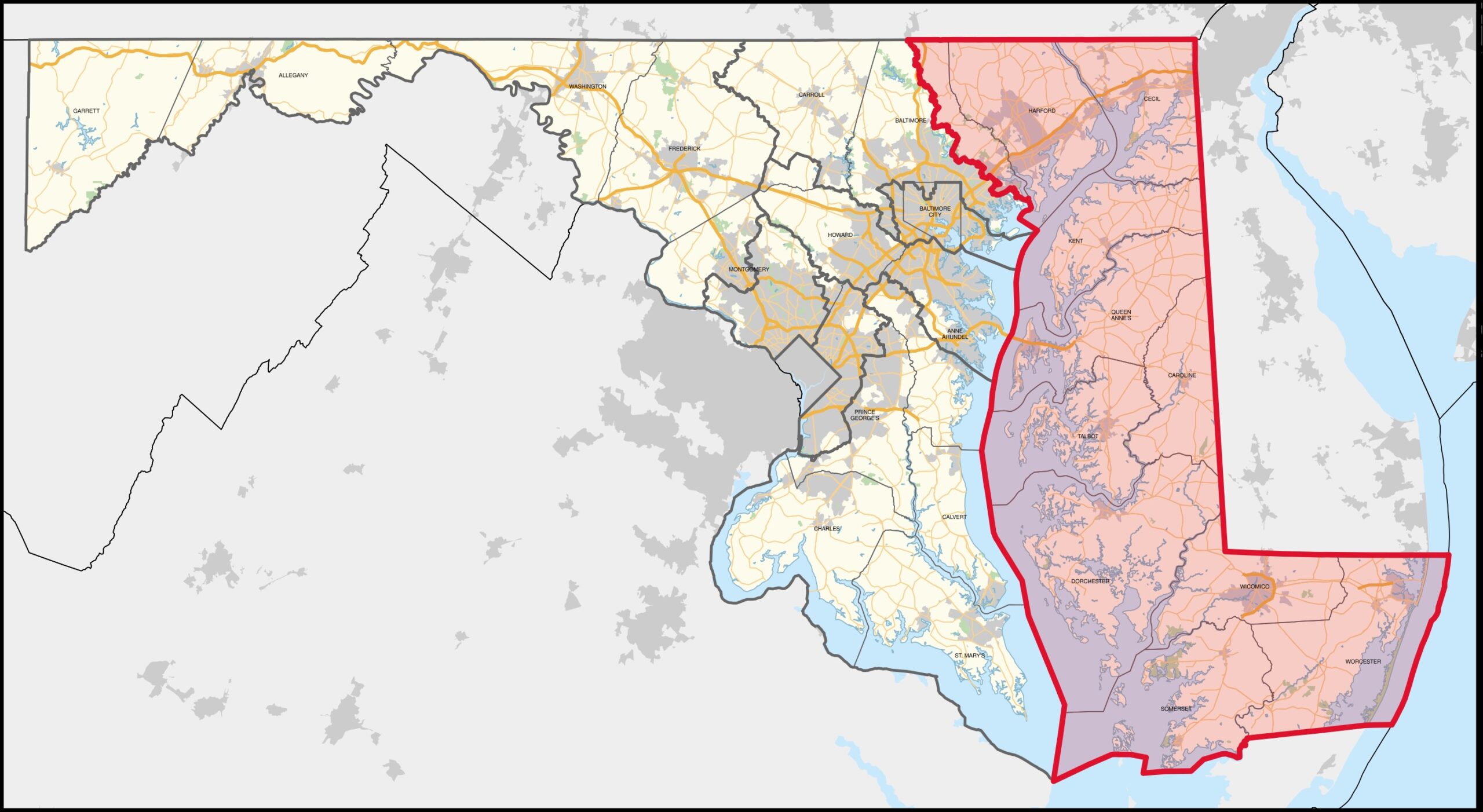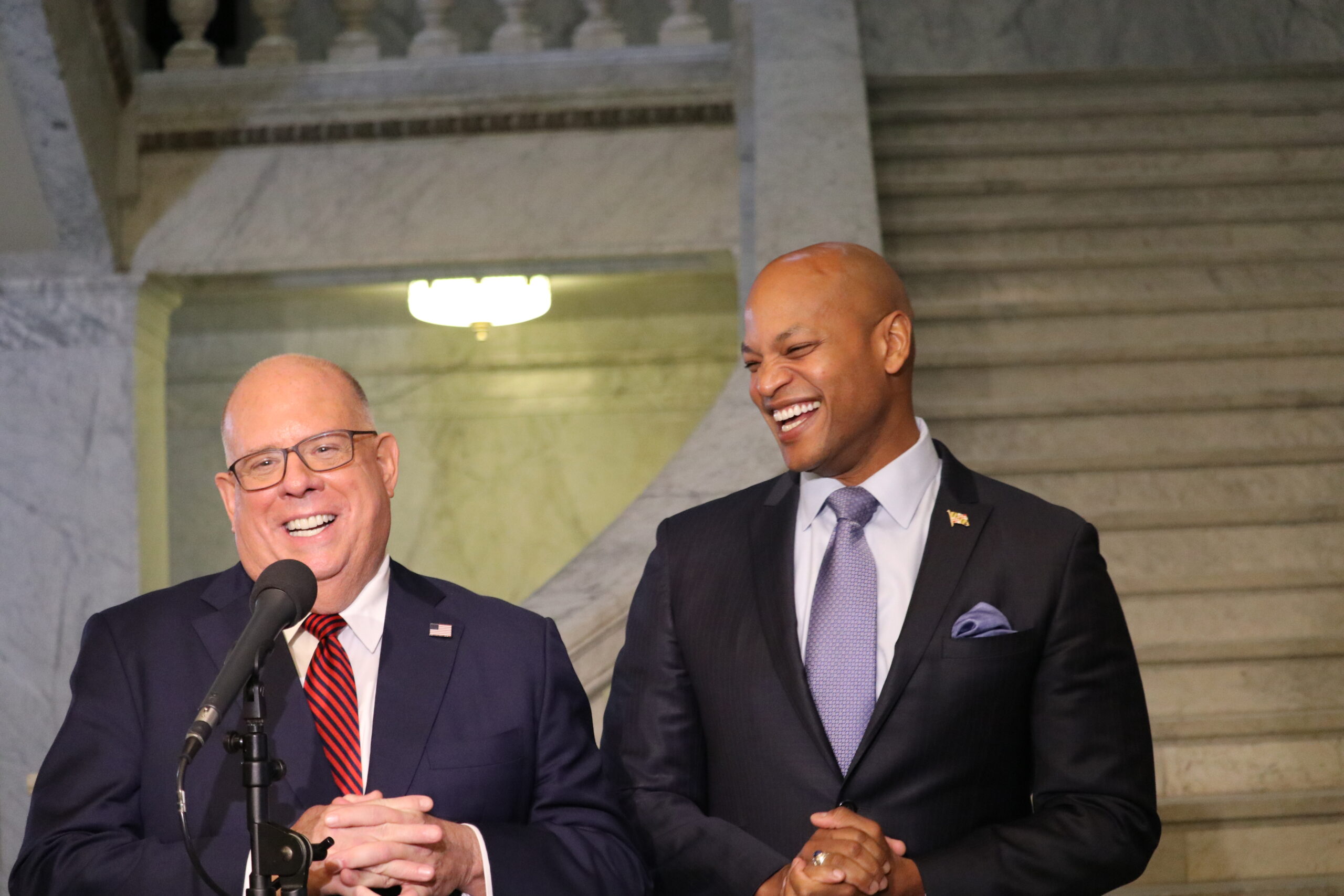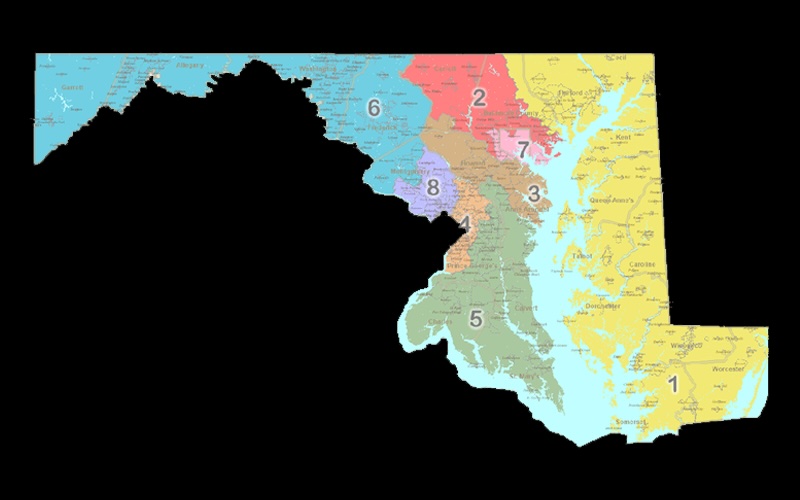Governor Wes Moore has demonstrated a zealous sense of urgency on his Governor’s Redistricting Advisory Commission (GRAC), an unprecedented initiative to redraw Maryland’s eight congressional district maps before the 2026 midterm elections.
The GRAC has been quickly and aggressively challenged by both expected and unexpected sources.
An expected source is the Republican caucus leadership in the Maryland General Assembly.
They have proposed their own redistricting initiative as an alternative to Moore’s GRAC initiative.
Their initiative includes legislation to limit partisan redistricting by creating a new independent redistricting commission, prohibiting future efforts to do redistricting on an accelerated schedule, and codifying part of a 2022 court ruling calling for compact congressional districts with common sense boundaries.
Republicans are also prepared for a legal challenge to any GRAC proposal that may be presented in a special session of the General Assembly later this year or in the 2026 regular session.
Opposing extreme gerrymandering through legal means was a strategy for Republicans in 2022 when a Maryland court ruled the original versions of proposed new congressional maps drawn by Democratic supermajorities in the General Assembly were gerrymandered.
An unexpected challenge to Governor Moore’s GRAC is from the Washington Post.
In early November, the Post published a scathing editorial with the following headline – “Wes Moore’s Gerrymandering Ploy.
One dictionary defines “ploy” as “a cunning plan or action designed to turn a situation to one’s own advantage.”
The Post editorial includes the following comments:
“This is brass knuckle politics, a flex of raw power, but Moore is trying to pretend he is being principled. Make no mistake, what the governor really wants is to disenfranchise his Republican constituents, especially in the conservative Eastern Shore and Western panhandle. Moore capitulated to escalating pressure from the left because he wants to be president. While Moore enjoys delivering lectures about fighting for democracy, he has not practiced what he preaches.”
Another unexpected and likely most consequential challenge to the GRAC comes from Democratic State Senator Bill Ferguson, the President of the Maryland Senate.
Recently, Ferguson shared his thinking with the Senate Democratic Caucus on the GRAC.
He believes that GRAC efforts if successful, could backfire He raised a critical rhetorical question – What if the Democratic super majorities in the Maryland Senate and House of Delegates draw a new map before the 2030 census and that map is struck down by the Supreme Court of Maryland? He suggested the result could be the court drawing new maps, which could lead to incumbent Democratic candidates losing future elections in one or even two existing congressional districts.
That result would reverse past gerrymandering that has led to the election of Democratic members of Congress in seven out of the eight districts in Maryland.
In a not-so-subtle shot across the bow to Governor Moore, Senator Ferguson wrote, “The majority of the Senate Democratic Caucus understands this unbalanced risk calculation, and I plan to represent that perspective as a member of the recently announced Governor’s Redistricting Advisory Commission.”
Another challenge for Moore is a question raised by Cumberland, Maryland, Mayor Raymond Morriss, the only Republican Moore appointed to the five-member GRAC. At the first GRAC meeting, Morriss said – “I’m all in here, but I’m trying to figure out what the problem is.”
All things considered, Wes Moore’s most significant challenges are not Senate Ferguson, Republicans, Washington Post editorials, or a good question from one GRAC member.
His greatest challenge is the current lack of interest in and demand for a GRAC in Maryland.
In what appears to be an organized, orchestrated, and targeted effort disguised as a spontaneous grassroots campaign to show interest in redistricting in Maryland, Senator Ferguson has reported that his office received more than 6,000 calls on that issue, but less than 100 of those calls were said to be from Maryland residents.
Accordingly, I predict that Wes Moore’s decision in year three of his first term to push for a GRAC initiative will not generate sufficient public support to move forward and address gerrymandering in Maryland, at least not in the foreseeable future.
Currently, there are more challenging issues facing Governor Moore and the General Assembly:
In a November 2025 University of Maryland, Baltimore County poll, 49% of Maryland respondents believe the state is on the wrong track, and in a February 2025 UMBC poll, 53% of Maryland respondents have considered moving to another state.
Earlier this month professional budget analysts in the General Assembly’s nonpartisan Department of Legislative Services projected s a $1.4 billion state budget revenue shortfall in fiscal year2026, an amount five times more than they predicted in April 2025.
David Reel is a public affairs and public relations consultant. He is also a consultant for profit organizations on governance, leadership, and management matters. He lives in Easton.










